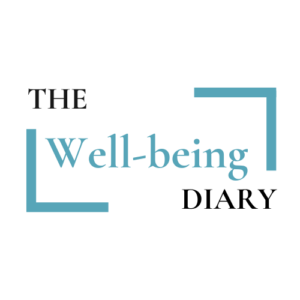Why Daily Movement is the Key to Long-Term Health

Key Takeaways
Why is daily movement essential for long-term health?
Daily movement is crucial for maintaining mobility, cardiovascular health, strength, and metabolism. It reduces the risk of chronic diseases, prevents injuries, boosts energy levels, and enhances overall well-being. Regular exercise also promotes longevity and an active lifestyle, helping you stay independent and vibrant as you age.
In today’s fast-paced world, it’s easy to fall into sedentary habits. Long hours at a desk, commuting, and screen time can take a toll on our overall well-being. However, making daily movement a priority is one of the most powerful ways to support long-term health. Whether it’s walking, stretching, strength training, or simply staying active throughout the day, movement plays a crucial role in keeping our bodies and minds in top shape. Here’s why incorporating daily movement is essential for long-term health and how it benefits key aspects of well-being.
1. Enhances Mobility and Flexibility
Our bodies are designed to move, and regular activity helps maintain mobility and flexibility. As we age, our joints can become stiff, and our range of motion may decrease. Incorporating activities like stretching, yoga, or dynamic movements keeps our muscles and joints limber, reducing discomfort and improving functional movement in daily life. Improved flexibility reduces the risk of muscle strains and joint pain, allowing you to move with ease and confidence.
Additionally, mobility exercises help lubricate the joints and enhance circulation, preventing stiffness that can lead to long-term discomfort. Daily stretching routines, such as yoga or Pilates, contribute significantly to maintaining a flexible and mobile body, making everyday tasks easier and more enjoyable.
2. Supports Cardiovascular Health
Daily movement, whether it’s brisk walking, jogging, or cycling, strengthens the heart and improves cardiovascular health. Regular exercise helps lower blood pressure, increase circulation, and reduce the risk of heart disease. Even simple activities like taking the stairs instead of the elevator can contribute to a healthier heart.
Cardiovascular exercise enhances lung capacity and endurance, allowing you to engage in physical activities with greater ease. Engaging in heart-healthy movement for at least 30 minutes a day has been shown to significantly reduce the risk of cardiovascular diseases, such as hypertension and stroke. Aerobic activities, such as swimming, dancing, or even gardening, can provide great benefits for heart health while also being enjoyable.
3. Builds Strength and Improves Posture
Strength training exercises, such as bodyweight exercises, resistance training, or lifting weights, help maintain and build muscle mass. This not only improves overall strength but also supports proper posture, reducing strain on the back and neck, especially for those who sit for long hours.
Good posture is essential for spinal health and prevents chronic pain. Many people experience discomfort due to poor posture habits, leading to misalignments and muscle imbalances. Incorporating strength-based workouts that focus on core stability and back support can significantly enhance posture, preventing slouching and strain on the spine.
4. Aids in Injury Prevention
Consistent movement and strengthening exercises play a key role in injury prevention. Stronger muscles, better balance, and enhanced coordination reduce the risk of falls and injuries. Stretching and mobility work also help prevent muscle tightness and joint stiffness that can lead to strains and sprains.
By incorporating a combination of strength training, flexibility exercises, and balance drills, you can prevent common injuries related to aging, such as fractures or ligament tears. Simple activities like practicing single-leg balance, engaging in functional movements, and improving core strength all contribute to an injury-resistant body.
5. Boosts Metabolism and Energy Levels
Physical activity has a direct impact on metabolism, helping the body efficiently burn calories and regulate weight. It also increases energy levels by improving circulation and oxygen flow, making you feel more alert and productive throughout the day.
Daily movement supports metabolic function by keeping the body’s systems working efficiently. A well-functioning metabolism aids digestion, enhances nutrient absorption, and supports the breakdown of fats and sugars. Engaging in movement throughout the day prevents sluggishness and fatigue, keeping you energized for work, hobbies, and social activities.
6. Promotes Longevity and Active Living
A lifestyle that incorporates regular movement contributes to longevity and active living. Studies have shown that people who engage in consistent physical activity tend to live longer, healthier lives with a lower risk of chronic diseases. By prioritizing movement, you invest in a future where you can continue enjoying life’s activities without limitations.
Aging is inevitable, but how we age is largely influenced by our daily habits. People who engage in frequent movement tend to maintain their independence, strength, and overall vitality as they grow older. Whether it’s walking, stretching, or resistance training, these movements contribute to overall well-being and prolonged healthspan.
7. Enhances Overall Fitness and Well-Being
Daily movement is the foundation of fitness, whether your goal is improving endurance, building muscle, or simply maintaining an active lifestyle. Exercise also supports mental well-being by reducing stress, improving mood, and promoting better sleep.
Regular movement stimulates the release of endorphins, also known as “feel-good” hormones, which help combat anxiety, depression, and mental fatigue. Additionally, activities like yoga and meditation-infused movement promote relaxation and mindfulness, further improving emotional and psychological health.
Make Movement a Daily Habit
Incorporating movement into your daily routine doesn’t have to be complicated. Here are a few simple ways to stay active:
- Take short walking breaks throughout the day
- Stretch in the morning and before bed
- Try bodyweight exercises like squats, lunges, and push-ups
- Use a standing desk or take phone calls while walking
- Engage in activities you enjoy, like dancing, hiking, or swimming
- Join a fitness class or find an accountability partner to stay motivated
Final Thoughts
Prioritizing daily movement is a small but powerful step toward better health. By focusing on mobility, cardiovascular health, flexibility, strength, posture, injury prevention, metabolism, longevity, and active living, you create a strong foundation for a vibrant, healthy life.
Movement should be seen as an investment in long-term well-being rather than a chore. The more you integrate physical activity into your daily life, the better you will feel both physically and mentally. Start today and move your way to a healthier, happier, and more energetic future!
FAQ
Why is daily movement important for long-term health?
Daily movement supports cardiovascular health, improves mobility, strengthens muscles, prevents injuries, boosts metabolism, and enhances overall well-being.
How can I incorporate more movement into my daily routine?
Simple ways to stay active include taking walking breaks, stretching, using a standing desk, doing bodyweight exercises, and engaging in enjoyable activities like dancing or hiking.
What are the benefits of stretching and flexibility exercises?
Stretching improves mobility, reduces stiffness, enhances circulation, and lowers the risk of muscle strains and joint pain, helping you move with ease.
Can daily movement help with energy levels and metabolism?
Yes! Regular physical activity boosts circulation, increases oxygen flow, enhances metabolism, and helps you feel more alert and energized throughout the day.
What type of exercises are best for improving posture?
Strength training, core stability exercises, and posture-focused movements like yoga or Pilates help align the spine, prevent slouching, and reduce back and neck strain.
